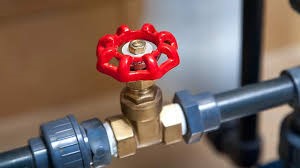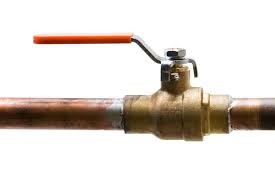Do you know where your main water shutoff is? Here is why you should.
Knowing where your main water shutoff valve is located can prevent thousands of dollars in water damage when plumbing problems strike. Plumbing emergencies can happen fast, and it can mean the difference between a quick fix and major water damage. It’s one of the most important things every homeowner should know.
Note: not all shutoffs look the same, but here’s an example:

Where to find your main water shutoff:
In most houses in our area, the main water shutoff is indoors, where the water service line enters the home. Because we live in a cold climate, water lines are buried deep to avoid freezing. The shutoff is usually installed inside the foundation to keep it protected. Common locations include:
-
The basement near the front wall (street facing side)
-
In a utility room or mechanical room
-
Near the floor, where the water line comes through the concrete or crawlspace wall
Look for a pipe coming out of the floor or wall with a valve handle on it. If you’re not sure which one is the main, we can help you identify it.
For mobile and manufactured homes the main shutoff is often located under the trailer skirt. It will be close to where the water line connects to the home. It could also be near the hot water tank or furnace closet inside the home. Possibly even at the ground-level riser coming from the utility connection. If you live in a mobile home park and aren’t sure where your shutoff is, we recommend checking with park management or giving us a call. We’re happy to help you find it.
Why it’s so important to know:
If a pipe bursts, a fitting fails, or your water heater starts leaking, shutting off your water quickly is crucial. Every minute counts, and if you’re scrambling to figure out where the shutoff is (or worse, if it doesn’t work!) the damage can escalate fast.
We’ve been called to more than a few situations where the homeowner didn’t know where the valve was, or couldn’t turn it off in time. The results were soaked floors, ruined drywall, and a big cleanup or restoration bill.
Upgrade to a Ball Valve, here’s why:
Older homes in this area often have gate valves – the kind with a round handle you have to turn multiple times. Over time these can seize up or become stuck. They can also leak, even when ‘shut off’ and also be hard to operate in an emergency.
(Picture below of gate valve)

This is why we recommend upgrading to a 1/4 turn ball valve. They’re easy to use, one quick turn and it’s off. They’re reliable and less prone to failure or leaks, and they are durable. They’re build to last, even in older plumbing systems.
(Picture below of a ball valve, what we recommend having)

If your shutoff is old, it’s worth having it inspected and possibly replaced.
Quick tips for homeowners:
-
Label it. Add a bright tag or sign so everyone can find it quickly.
-
Test it once a year: Gently turn it off and back on to make sure it still works.
-
Show everyone: Make sure family members or tenants know where it is and how to use it.
-
Keep it clear: Don’t block access with storage or furniture, speed matters in an emergency.
If you’re not sure where your shutoff is, or if its outdated, stuck, or unreliable, we’re here to help. At The Family Plumbing and Heating, we serve homeowners across Prince George, Quesnel, and the Cariboo, with honest advice and professional service.
Give us a call at (778)764-1149 or contact us through our website and we’ll make sure your home is ready for anything.
— The Family Plumbing and Heating Team
